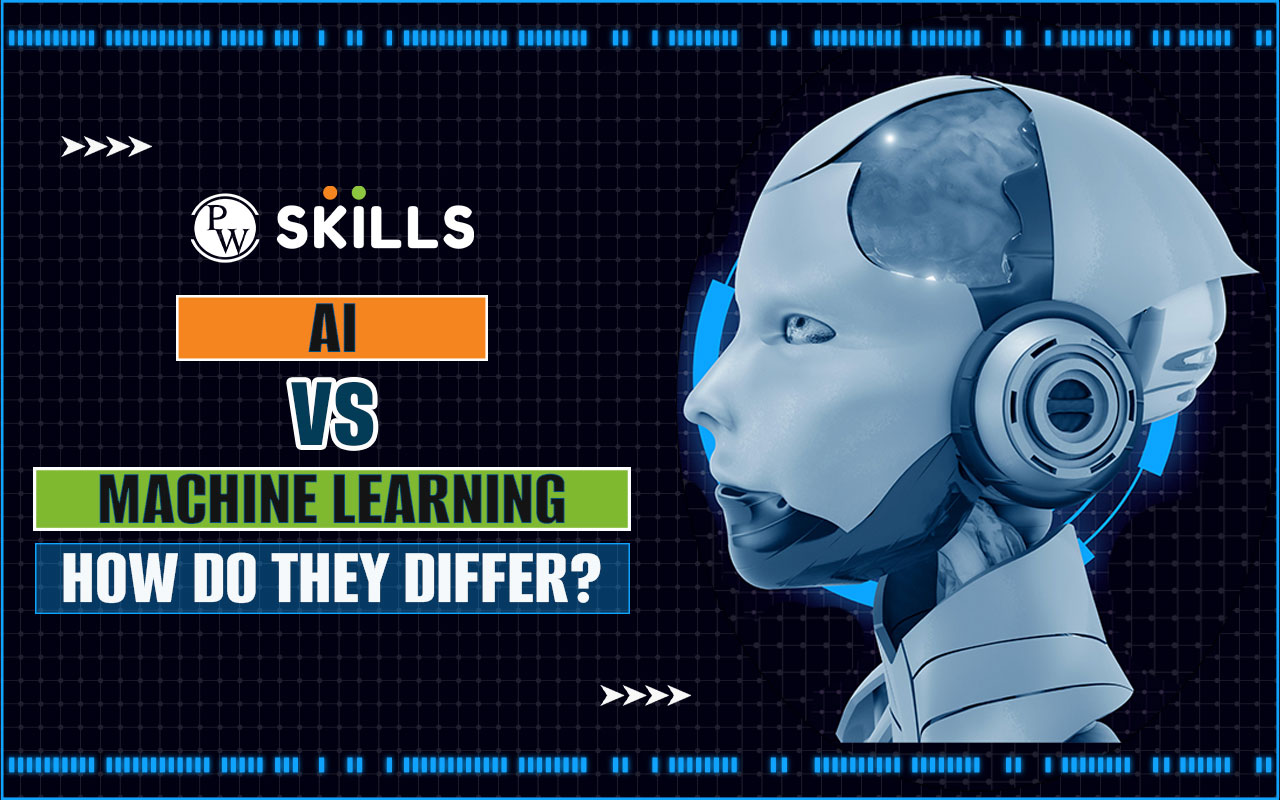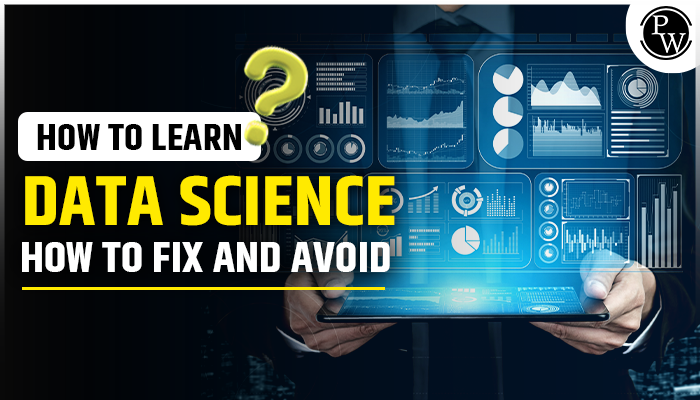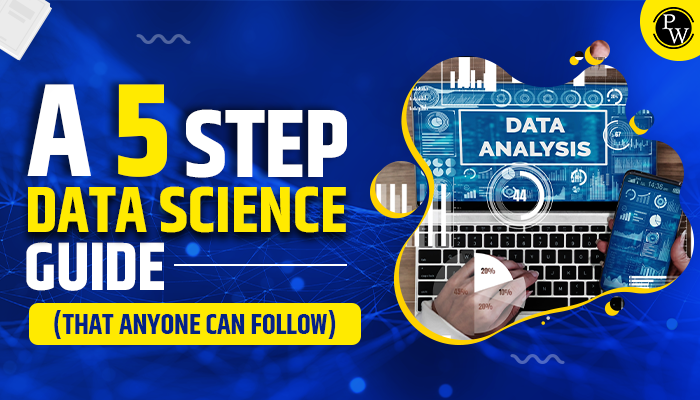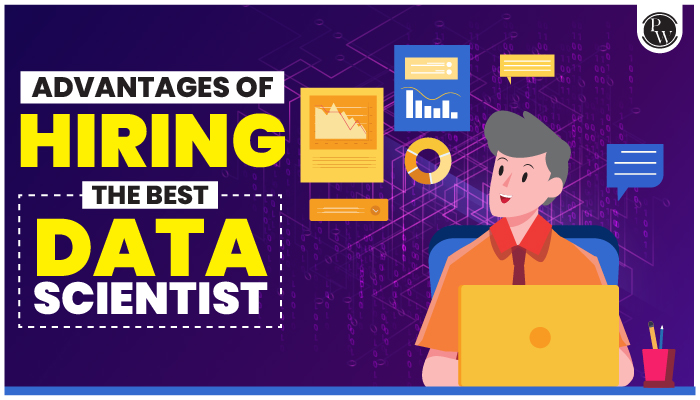Artificial Intelligence and Machine Learning: Do you ever wonder how Artificial Intelligence (AI) and Machine Learning (ML) differ from each other? Well, with the exponential growth of technology in recent years, these two revolutionary technologies are transforming our lives with their sophisticated systems. Whether it’s conversational AI tools that assist customer service teams or ML models used for powerful decision-making by companies across many industries, both technologies offer dynamic insights into our world. But what about AI and ML separately?
How do they really compare to one another—and more importantly, where should we focus the majority of our energy when thinking about applications like robotics or autonomous vehicles? In this blog post, we’ll explore just that: a comprehensive look at the core differences between artificial intelligence and machine learning. Downloading artificial intelligence and machine learning PDF helps you understand these technologies’ basics.
After understanding the basics of both, it becomes your responsibility to further research out all potential applications they might have in our lives. Learning about these exciting developments can open up a wide range of opportunities! If you’re interested to learn more about the power of AI & ML, Master Generative AI: Data Science by Physics Wallah is THE BEST course out there. To sweeten the deal – use “READER” coupon to get discount
Recommended Technical Course
- MERN Full Stack Development Course
- Generative AI Course
- System Design Workshop
- Java+DSA 1.0 Course
- Full Stack Web Dev 1.0 Course
- Data Science with ML 1.0 Course

What is Artificial Intelligence and Machine Learning?
Artificial Intelligence (AI) is a field dedicated to developing computers and robots capable of emulating and surpassing human behaviors. Programs infused with AI can analyze and contextualize data, offering information or autonomously triggering actions without human intervention.
In the contemporary landscape, AI plays a central role in various technologies, including smart devices and voice assistants like Apple’s Siri. Companies leverage techniques such as natural language processing and computer vision, empowering automation of tasks, expediting decision-making processes, and facilitating customer interactions through chatbots.
Machine learning serves as a crucial avenue toward achieving artificial intelligence. Positioned as a subcategory of AI, machine learning employs algorithms to autonomously derive insights and discern patterns from data, progressively refining decision-making capabilities. Programmers delve into machine learning, conducting studies and experiments to push the boundaries of enhancing a computer system’s perception, cognition, and action. Deep learning, an advanced facet of machine learning, takes this exploration further. Employing expansive neural networks that mimic the logical analysis capabilities of the human brain, deep learning models adeptly discern intricate patterns and make predictions autonomously, operating independently of direct human input.
Also read: What is Artificial Intelligence (AI), Applications, Examples, Companies, Course
How Are Artificial Intelligence and Machine Learning Connected?
- Role of ML in AI: ML plays a pivotal role in achieving AI’s goals. Instead of explicitly programming rules for every possible scenario, AI systems can learn and adapt to new situations through ML algorithms.
- Learning from Data: ML allows AI systems to learn from large datasets, identify patterns, and improve their performance over time. This learning process is crucial for AI systems to exhibit intelligence and adaptability.
Difference between Artificial Intelligence and Machine Learning and Deep Learning
The table below shows the key difference between artificial intelligence and machine learning and deep learning:
| Difference between Artificial Intelligence and Machine Learning and Deep Learning | |||
| Feature | Artificial Intelligence (AI) | Machine Learning (ML) | Deep Learning (DL) |
| Definition | AI refers to machines or systems that can perform tasks that typically require human intelligence. | ML is a subset of AI that involves the use of algorithms and statistical models to enable machines to perform tasks without explicit programming. | DL is a subfield of ML that involves neural networks with many layers (deep neural networks) to learn and make decisions. |
| Learning Capability | Can learn from experience and improve over time. | Learns from data and experiences to improve performance on a specific task. | Learns from large amounts of labeled data and automatically extracts hierarchical features. |
| Human Intervention | Can operate with or without human intervention. | Requires human input to define features and train models initially. | Relies heavily on data and can automatically learn without explicit human programming. |
| Flexibility | Broad application across various domains. | More specific to the trained task or problem. | Specialized for specific tasks but can be versatile based on training data. |
| Examples | Speech recognition, image processing, game playing (e.g., chess), natural language processing. | Predictive analytics, recommendation systems, fraud detection. | Image and speech recognition, language translation, autonomous vehicles. |
| Data Requirements | Requires diverse datasets for a broader understanding. | Dependent on labeled datasets for supervised learning; unsupervised learning relies on unlabeled data. | Relies on large labeled datasets, and the quality of data is crucial for effective learning. |
| Computational Resources | Can vary from simple rule-based systems to complex systems requiring significant computing power. | Requires moderate to high computational resources based on the complexity of algorithms and size of datasets. | Demands high computational power, often accelerated with GPUs or TPUs, especially for training deep neural networks. |
| Applications | Robotics, healthcare, gaming, virtual assistants. | Predictive maintenance, recommendation systems, financial fraud detection. | Image and speech recognition, natural language processing, autonomous vehicles. |
Also read: How AI and Machine Learning is Transforming Computer Science
Artificial Intelligence and Machine Learning Examples
Here’s a table illustrating examples of artificial intelligence examples and Machine Learning (ML) applications examples:
| Artificial Intelligence and Machine Learning Examples | ||
| Application | Artificial Intelligence (AI) | Machine Learning (ML) |
| Customer Service | Chatbots providing support on websites | Analyzing customer interactions to improve responses |
| Autonomous Vehicles | Self-driving cars, drones | Machine learning for real-time decision-making on the road |
| Fraud Detection | Identifying unusual patterns in financial transactions | Learning from past fraud instances to detect anomalies |
| Personalized Healthcare | Predicting patient outcomes, personalized treatment plans | Analyzing medical data to tailor healthcare interventions |
| Automated Stock Trading | Algorithmic trading systems | Predictive modeling to optimize trading decisions |
| Gaming Industry | NPC behaviors, procedural content generation | ML for adaptive gameplay and personalized gaming experiences |
| Natural Language Processing (NLP) | Language translation services, sentiment analysis | Teaching machines to understand and generate human language |
| Smart Home Devices | AI-enabled thermostats, security cameras | ML algorithms adapting to user preferences and behavior |
| Virtual Reality (VR) and Augmented Reality (AR) | VR simulations, AR applications | Enhancing user experiences through ML-driven content adaptation |
| Speech Recognition | Virtual assistants like Siri, Google Assistant | Training models to recognize speech patterns |
Artificial Intelligence and Machine Learning Jobs
Here are some jobs related to AI and ML:
| Artificial Intelligence and Machine Learning Jobs | ||
| Job Title | Description | Skills |
| AI/ML Product Manager | Lead the development of AI/ML products, define requirements, and oversee implementation | – Understanding of AI/ML concepts and market trends |
| Machine Learning Engineer | Develop and implement machine learning models and systems | – Proficient in programming languages (Python, Java) |
| AI Research Scientist | Conduct research to advance AI capabilities and develop new algorithms | – Strong mathematical and algorithmic skills |
| Natural Language Processing Engineer | Build systems that understand and generate human language | – Proficiency in programming languages (Python, Java) |
| Data Scientist | Analyze complex datasets, extract insights, and present findings | – Proficient in data analysis tools (Python, R) |
| Computer Vision Engineer | Develop computer vision applications for image and video analysis | – Experience with deep learning frameworks (TensorFlow, PyTorch) |
Also read: Automated Machine Learning: What It Does, How It Helps, Examples
Artificial Intelligence and Machine Learning Scope
The scope of Artificial Intelligence (AI) and Machine Learning (ML) is extensive and continues to grow rapidly. Here are some key aspects highlighting their scope:
1) In-Depth Scope in India:
The future scope of Artificial Intelligence (AI) and Machine Learning (ML) in India is expansive, providing promising career opportunities. Aspirants are encouraged to pursue AI and ML due to their increasing relevance in various industries.
2) Automation and Robotics:
AI and ML play a crucial role in industrial automation and robotics. Developing intelligent systems and robots is transforming industries by improving efficiency and reducing human intervention.
3) Healthcare Applications:
AI is used for diagnostic purposes, predictive analytics, and personalized medicine. ML algorithms analyze medical data to identify patterns and provide insights for better patient care.
4) Data Analytics:
ML techniques are used for advanced data analytics, helping businesses extract valuable insights from large datasets. This aids in better decision-making and understanding customer behavior.
5) Wide-Ranging Opportunities:
The scope of BSc in AI & ML is broad, offering diverse career paths. AI’s impact extends across domains, and lucrative, high-paying careers are available for those excelling in this field.
6) Growing Relevance:
The impact of AI and ML is poised to expand further, influencing various sectors globally. Both technologies play crucial roles in shaping the future of industries and creating new career avenues.
Advantages of Using Artificial Intelligence and Machine Learning Together
Combining Artificial Intelligence (AI) and Machine Learning (ML) offers numerous advantages, enhancing various aspects of business and decision-making:
- Error Reduction: AI, particularly ML algorithms, significantly reduces errors, enhancing accuracy and precision in various tasks.
- Insights and Predictions: AI and ML empower businesses to process large datasets, identifying new opportunities and providing valuable insights and predictions.
- Faster Decision-Making: When combined, AI and other technologies enable machines to make decisions and execute actions more rapidly than humans.
- Process Automation: AI, in conjunction with ML, automates repetitive tasks and processes. This leads to increased efficiency, reduced manual effort, and the ability to handle complex tasks at scale.
- Efficient Resource Management: AI and ML can optimize resource allocation in various industries. This includes inventory management, supply chain optimization, and workforce planning, leading to cost savings and improved resource utilization.
- Accelerated Innovation: AI and ML contribute to rapid innovation in various fields. Integrating these technologies from healthcare to scientific research accelerates the pace of discovery and problem-solving.

Artificial Intelligence and Machine Learning Course
It’s important to understand the differences between artificial intelligence and machine learning. AI has the potential to rapidly automate tasks that might otherwise take humans much longer to complete. Meanwhile, ML allows machines to learn from data and improve over time, making them valuable additions to modern projects.
Change is inevitable; staying informed about technological advancements makes it easier for those affected by such changes to navigate the waters accordingly. With this knowledge in hand, businesses may choose to begin investing in AI and ML-related solutions as a means of increasing their efficiency and productivity—or even just bringing about positive change through other initiatives.
Mastering Generative AI: Data Science by Physics Wallah offers an excellent way to stay ahead of the curve in this ever-evolving field with its comprehensive program for mastering Machine Learning practices.
One way to further your understanding on this topic is to check out Decode Data Science with ML 1.0 by Physics Wallah. This course offers an extensive coverage on machine learning algorithms and related topics for a comprehensive syllabus. By entering “READER” at checkout, readers looking to invest in their skillset can also enjoy a substantial discount on PW incredible courses!
Also read: Artificial Intelligence and Machine Learning Job Trends in 2023
FAQs
What is the importance of AI and ML in business?
AI and ML offer businesses valuable tools for automation, decision-making, and gaining insights from data. They enhance efficiency, enable predictive analytics, personalize customer experiences, automate routine tasks, and contribute to innovation. Businesses leveraging AI and ML gain a competitive edge in today's technology-driven landscape.
Are AI and ML only relevant for large enterprises?
No, AI and ML are accessible to businesses of all sizes. Many cloud-based platforms provide affordable AI services, and various open-source tools enable smaller enterprises to implement these technologies. From automation to data analysis, businesses can find practical applications that suit their scale and objectives.
How do AI and ML impact job roles?
While AI and ML automate certain tasks, they also create new job roles in areas like data science, machine learning engineering, and AI development. These technologies enhance productivity and allow human workers to focus on tasks that require creativity, critical thinking, and emotional intelligence—areas where machines may lack proficiency.
What ethical considerations are associated with AI and ML?
Ethical considerations in AI and ML include issues like bias in algorithms, privacy concerns, and the potential for job displacement. Addressing these challenges involves developing transparent and fair algorithms, ensuring data privacy, and implementing policies to manage the societal impact of these technologies.
Can AI systems learn on their own, or do they always need human input?
While AI systems can learn from data without explicit human programming, they initially require human input for training. Humans provide the data, define objectives, and fine-tune algorithms.




